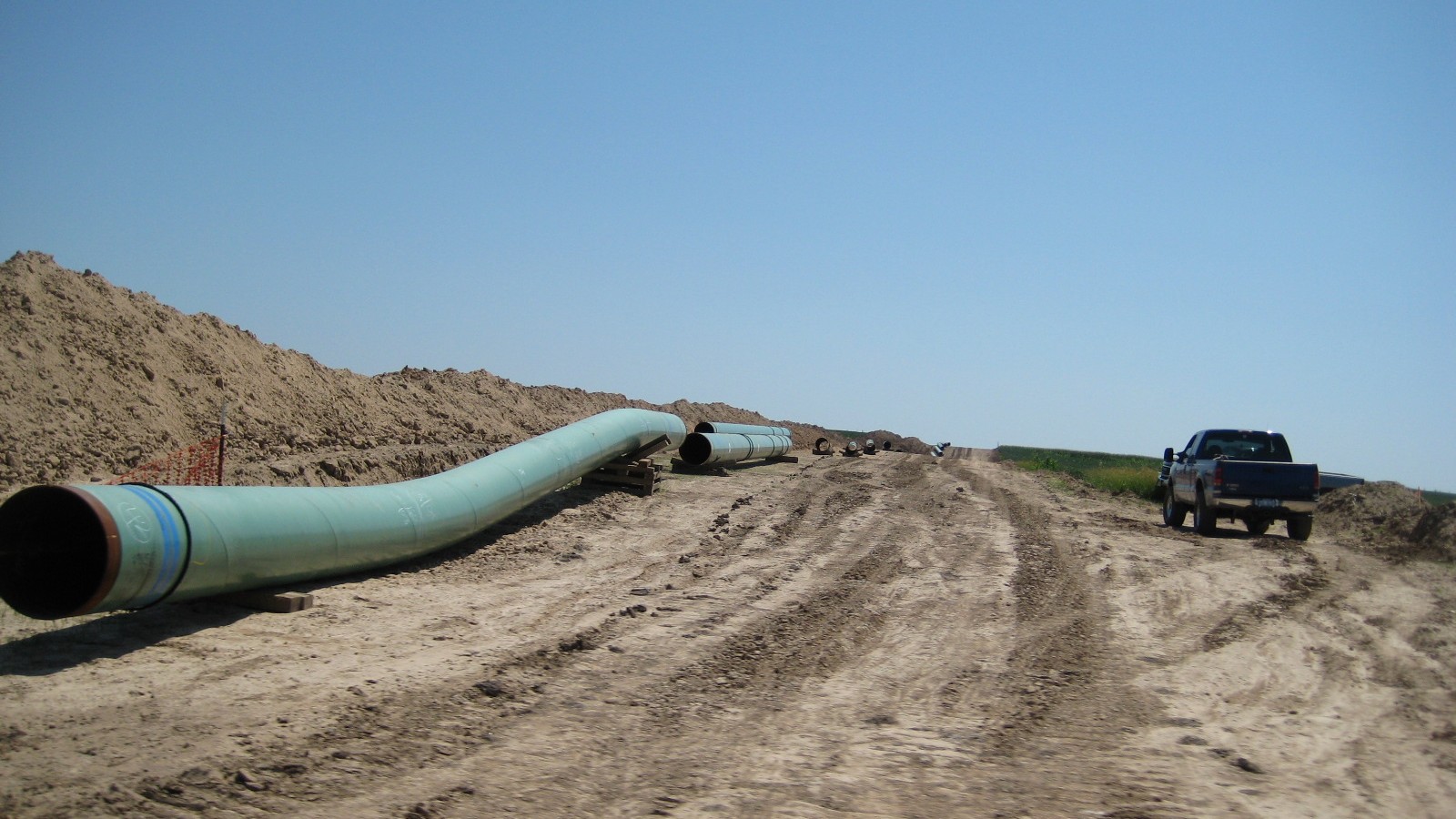
LINCOLN, Neb. – The developer of the Keystone XL pipeline is shifting course in Nebraska and will withdraw lawsuits seeking to gain access to the property of landowners who oppose the project, the company announced Tuesday.
TransCanada Inc. said it will abandon its current efforts to invoke eminent domain through the courts and will reapply for state approval despite having received the go-ahead from former Republican Gov. Dave Heineman in 2013.
Heineman approved the project under a now-contested pipeline-siting law that granted him the final say over the project’s route through Nebraska. TransCanada spokesman Mark Cooper said the company will instead seek a review from the Nebraska Public Service Commission — a small, elected group that regulates most pipeline projects — as many opponents have wanted.
Cooper said the company intends to seek approval for the same route that was approved by the governor, but reapplying through the commission provides “the clearest path to achieving route certainty,” given the lawsuits that sought to overturn Nebraska’s 3-year-old pipeline-siting law.
“It ultimately saves time, reduces conflict with those who oppose the project and sets clear rules for approval of the route,” Cooper said.
Opponents argued in court that the law was invalid because it allowed TransCanada to circumvent the commission and receive approval from Heineman, who supported the pipeline. Under Nebraska’s constitution, the commission has the authority to regulate “common carriers” such as pipelines and railroads.
The company and its supporters argued that the law is valid, and noted that the project was reviewed once by the Nebraska Department of Environmental Quality and five times by the U.S. State Department.
Pipeline opponents celebrated the announcement as a major victory, but still called on President Barack Obama to reject a presidential permit for the project. Federal approval is required because the project crosses the U.S.-Canadian border.
“TransCanada is a desperate company in an ever-losing situation in Nebraska,” said Jane Kleeb, executive director of the group Bold Nebraska. “Farmers and ranchers continue to stand up this reckless foreign corporation and we continue to win.”
The pipeline would travel from Canada through Montana and South Dakota to Nebraska, where it would connect with existing pipelines to carry more than 800,000 barrels of crude oil a day to refineries along the Texas Gulf Coast.
In January, the Nebraska Supreme Court allowed the pipeline-siting law to stand by default. Four judges on the seven-member court ruled in favour of landowners who challenged the law, but a super-majority of five was needed.
The remaining three judges refused to rule on the law, arguing that they couldn’t because the plaintiffs in the lawsuit didn’t have legal standing. Opponents responded by filing a nearly identical lawsuit with landowners who were directly affected.
Cooper said 91 per cent of Nebraska landowners along the pipeline route have agreed to easements so the company can build the pipeline.
Cooper said TransCanada could apply to the Public Service Commission as early as Friday. Reviews by the commission generally take seven months to a year to complete, and its decisions can be appealed in the state’s district court system.
Art Tanderup, a farmer and pipeline opponent whose land is on the proposed route, said he’s confident the commission will not allow the pipeline to cross the Sandhills — a region of fragile, grass-covered sand dunes — or the Ogallala Aquifer, a major groundwater supply that lies beneath Nebraska and parts of seven other states.
“This is a victory for landowners standing up to prevent a foreign corporation from taking their land for corporate greed through eminent domain,” he said.